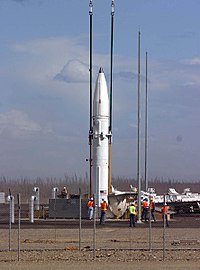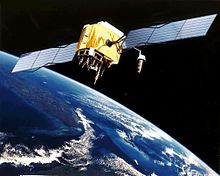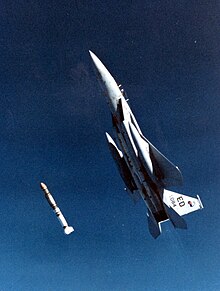Eternal return (also known as eternal recurrence) is a theory that the universe and all existence and energy has been recurring, and will continue to recur, in a self-similar form an infinite number of times across infinite time or space.
The theory is found in Indian philosophy and in ancient Egypt as well as Judaic wisdom literature (Ecclesiastes) and was subsequently taken up by the Pythagoreans and Stoics. With the decline of antiquity and the spread of Christianity, the theory largely fell into disuse in the Western world, with the exception of 19th Century philosopher Friedrich Nietzsche, who connected the thought to many of his other concepts, including amor fati. Eternal return relates to the philosophy of predeterminism in that people are predestined to continue repeating the same events over and over again.
Premise
The basic premise proceeds from the assumption that the probability of a world coming into existence exactly like our own is nonzero. If space and time are infinite, then it follows logically that our existence must recur an infinite number of times.
In 1871 Louis Auguste Blanqui,
assuming a Newtonian cosmology where time and space are infinite,
claimed to have demonstrated eternal recurrence as a mathematical
certainty.
Classical antiquity
In ancient Egypt, the scarab (dung beetle) was viewed as a sign of eternal renewal and reemergence of life, a reminder of the life to come.
The book of Ecclesiastes
in the Hebrew Bible states: "What has been will be again, what has been
done will be done again; there is nothing new under the sun." (New
International Version).
In ancient Greece, the concept of eternal return was connected with Empedocles, Zeno of Citium, and most notably in Stoicism.
The idea is also suggested in Virgil's Aeneid.
In Book 6 of the poem (lines 724–51), the hero, Aeneas, descends into
the Underworld and learns from Anchises—his deceased father whose soul
lives on in Elysium—that a system of metempsychosis secures the
continuation of the human race: after death, each human soul undergoes a
period of expurgation, cleansing themselves of the impurity accrued
during their embodied life on earth. Most souls, however, are condemned
to return to an embodied existence on earth (rather than move on to
Elysium, like Anchises). And yet, before they return to that life, they
are summoned by "god" to the River Lethe, where they drink the water and
come to forget what they have experienced—viz., all the suffering and
punishment for their "sins", and the struggles and toil that went along
with their previous embodied existence. In other words, right as they
enter into their new embodied existences, they are made ignorant, both
of what they did in their previous existence that incurred all the
penalties in the afterlife, and indeed of the penalties themselves. They
are, then, forced into a position where they are more or less doomed to
repeat their wrongdoings, all the while remaining unaware of the cost
that those wrongdoings will bring upon them. One scholar, David Quint,
has argued that this moment in Virgil's poem is illustrative of the
therapeutic effects of oblivion—of the way that the act of forgetting
secures the continuation of life. That is one interpretation, but the
point seems to strike a more tragic note about the way humans are
condemned to act out the same errors time and again because of enforced
ignorance. The Aeneid is, more generally, accepted as having a
thoroughly tragic outlook on human existence (a landmark study on this
is W. R. Johnson's Darkness Visible(1976); see also P. R. Hardie, "Virgil and Tragedy" in the volume The Cambridge Companion to Virgil, edited by C. Martindale (Cambridge University Press: 1997)).
Indian religions
Life circle in Vajrayana
The concept of cyclical patterns is prominent in Indian religions, such as Jainism, Hinduism, Sikhism and Buddhism
among others. The important distinction is that events don't repeat
endlessly but souls take birth until they attain salvation. The wheel of life represents an endless cycle of birth, life, and death from which one seeks liberation. In Tantric Buddhism, a wheel of time concept known as the Kalachakra expresses the idea of an endless cycle of existence and knowledge.
Friedrich Nietzsche
The
concept of "eternal recurrence", the idea that with infinite time and a
finite number of events, will recur again and again infinitely, is
central to the writings of Friedrich Nietzsche. As Heidegger points out in his lectures on Nietzsche, Nietzsche's first mention of eternal recurrence, in aphorism 341 of The Gay Science (cited below), presents this concept as a hypothetical question rather than postulating it as a fact. According to Heidegger, it is the burden imposed by the question
of eternal recurrence—whether or not such a thing could possibly be
true—that is so significant in modern thought: "The way Nietzsche here
patterns the first communication of the thought of the 'greatest burden'
[of eternal recurrence] makes it clear that this 'thought of thoughts'
is at the same time 'the most burdensome thought.' "
The thought of eternal recurrence appears in a few of his works, in particular §285 and §341 of The Gay Science and then in Thus Spoke Zarathustra. The most complete treatment of the subject appears in the work entitled Notes on the Eternal Recurrence, a work which was published in 2007 alongside Søren Kierkegaard's
own version of eternal return, which he calls 'repetition'. Nietzsche
sums up his thought most succinctly when he addresses the reader with:
"Everything has returned. Sirius, and the spider, and thy thoughts at
this moment, and this last thought of thine that all things will
return". However, he also expresses his thought at greater length when
he says to his reader:
"Whoever thou mayest be, beloved stranger, whom I meet here for the first time, avail thyself of this happy hour and of the stillness around us, and above us, and let me tell thee something of the thought which has suddenly risen before me like a star which would fain shed down its rays upon thee and every one, as befits the nature of light. – Fellow man! Your whole life, like a sandglass, will always be reversed and will ever run out again, – a long minute of time will elapse until all those conditions out of which you were evolved return in the wheel of the cosmic process. And then you will find every pain and every pleasure, every friend and every enemy, every hope and every error, every blade of grass and every ray of sunshine once more, and the whole fabric of things which make up your life. This ring in which you are but a grain will glitter afresh forever. And in every one of these cycles of human life there will be one hour where, for the first time one man, and then many, will perceive the mighty thought of the eternal recurrence of all things:– and for mankind this is always the hour of Noon".
This thought is indeed also noted in a posthumous fragment. The origin of this thought is dated by Nietzsche himself, via posthumous fragments, to August 1881, at Sils-Maria. In Ecce Homo (1888), he wrote that he thought of the eternal return as the "fundamental conception" of Thus Spoke Zarathustra.
Scene of Nietzsche's inspiration: "by a massive, pyramidally piled up block not far from Surlei".
Several authors have pointed out other occurrences of this hypothesis in contemporary thought. Rudolf Steiner,
who revised the first catalogue of Nietzsche's personal library in
January 1896, pointed out that Nietzsche would have read something
similar in Eugen Dühring's Courses on philosophy (1875), which Nietzsche readily criticized. Lou Andreas-Salomé pointed out that Nietzsche referred to ancient cyclical conceptions of time, in particular by the Pythagoreans, in the Untimely Meditations. Henri Lichtenberger and Charles Andler have pinpointed three works contemporary to Nietzsche which carried on the same hypothesis: J.G. Vogt, Die Kraft. Eine real-monistische Weltanschauung (1878), Auguste Blanqui, L'éternité par les astres (1872) and Gustave Le Bon, L'homme et les sociétés (1881). Walter Benjamin juxtaposes Blanqui and Nietzsche's discussion of eternal recurrence in his unfinished, monumental work The Arcades Project.
However, Gustave Le Bon is not quoted anywhere in Nietzsche's
manuscripts; and Auguste Blanqui was named only in 1883. Vogt's work, on
the other hand, was read by Nietzsche during this summer of 1881 in
Sils-Maria. Blanqui is mentioned by Albert Lange in his Geschichte des Materialismus (History of Materialism), a book closely read by Nietzsche.
The eternal recurrence is also mentioned in passing by the Devil in Part Four, Book XI, Chapter 9 of Dostoevsky's The Brothers Karamazov, which is another possible source that Nietzsche may have been drawing upon.
Walter Kaufmann suggests that Nietzsche may have encountered this idea in the works of Heinrich Heine, who once wrote:
[T]ime is infinite, but the things in time, the concrete bodies, are finite. They may indeed disperse into the smallest particles; but these particles, the atoms, have their determinate numbers, and the numbers of the configurations which, all of themselves, are formed out of them is also determinate. Now, however long a time may pass, according to the eternal laws governing the combinations of this eternal play of repetition, all configurations which have previously existed on this earth must yet meet, attract, repulse, kiss, and corrupt each other again...
Nietzsche calls the idea "horrifying and paralyzing", referring to it as a burden of the "heaviest weight" ("das schwerste Gewicht") imaginable. He professes that the wish for the eternal return of all events would mark the ultimate affirmation of life:
What, if some day or night a demon were to steal after you into your loneliest loneliness and say to you: 'This life as you now live it and have lived it, you will have to live once more and innumerable times more; and there will be nothing new in it, but every pain and every joy and every thought and sigh and everything unutterably small or great in your life will have to return to you, all in the same succession and sequence' ... Would you not throw yourself down and gnash your teeth and curse the demon who spoke thus? Or have you once experienced a tremendous moment when you would have answered him: 'You are a god and never have I heard anything more divine.' [The Gay Science, §341]
To comprehend eternal recurrence in his thought, and to not merely come to peace with it but to embrace it, requires amor fati, "love of fate":
My formula for human greatness is amor fati: that one wants to have nothing different, not forward, not backward, not in all eternity. Not merely to bear the necessary, still less to conceal it—all idealism is mendaciousness before the necessary—but to love it.
In Carl Jung's seminar on Thus Spoke Zarathustra,
Jung claims that the dwarf states the idea of the eternal return before
Zarathustra finishes his argument of the eternal return when the dwarf
says, "'Everything straight lies,' murmured the dwarf disdainfully.
'All truth is crooked, time itself is a circle.'" However, Zarathustra
rebuffs the dwarf in the following paragraph, warning him against
over-simplifications.
Gilles Deleuze
interpreted Nietzsche's Eternal Return as not simply a directive for
our ethical behavior, but as a radical understanding of the nature of
time. This is not a 'flat circle' or cyclical understanding of time, but
a description of the empty form of future time. It is the
ever-generated new time that allows us to continually act in new ways,
that allows the creation of novelty.
Albert Camus
The philosopher and writer Albert Camus
explores the notion of "eternal return" in his essay on "The Myth of
Sisyphus", in which the repetitive nature of existence comes to
represent life's absurdity, something the hero seeks to withstand
through manifesting what Paul Tillich
called "The Courage to Be". Though the task of rolling the stone
repeatedly up the hill without end is inherently meaningless, the
challenge faced by Sisyphus is to refrain from despair. Hence Camus
famously concludes that, "one must imagine Sisyphus happy."
Opposing argument
Nietzsche scholar Walter Kaufmann has described an argument originally put forward by Georg Simmel, which rebuts the claim that a finite number of states must repeat within an infinite amount of time:
Even if there were exceedingly few things in a finite space in an infinite time, they would not have to repeat in the same configurations. Suppose there were three wheels of equal size, rotating on the same axis, one point marked on the circumference of each wheel, and these three points lined up in one straight line. If the second wheel rotated twice as fast as the first, and if the speed of the third wheel was 1/π of the speed of the first, the initial line-up would never recur.
Thus a system could have an infinite number of distinct physical
configurations that never recur. However the example presupposes the
possibility of perfect continuity: for instance, if the universe proves
to have a quantum foam nature, then the exact quantity of an irrational number cannot be expressed by any physical object.
















